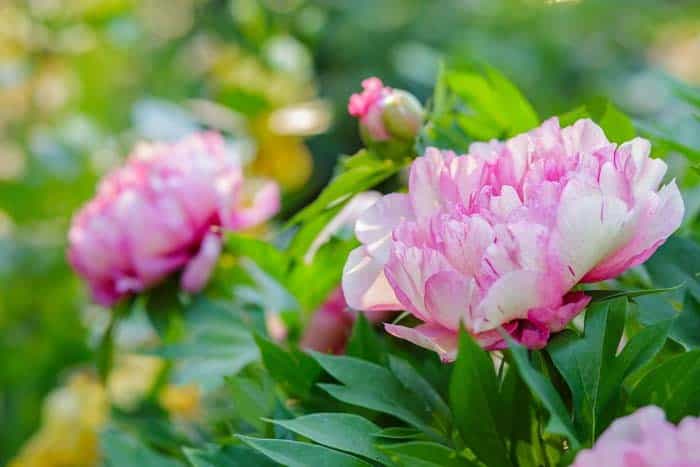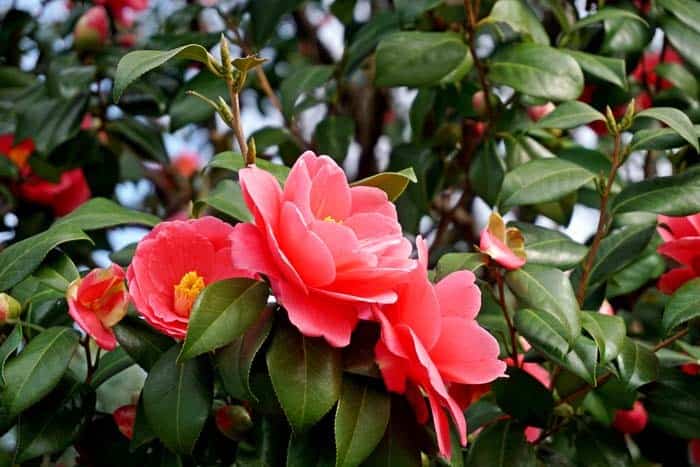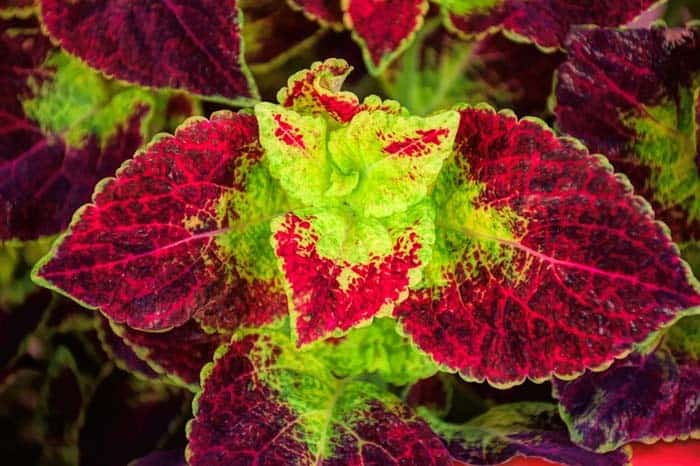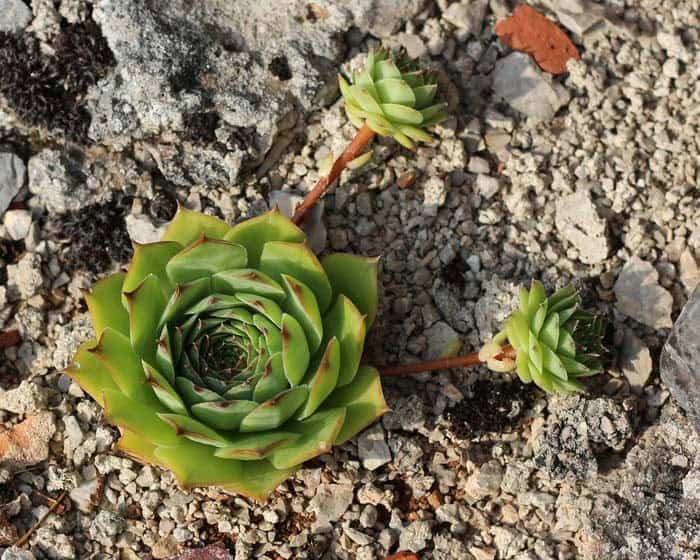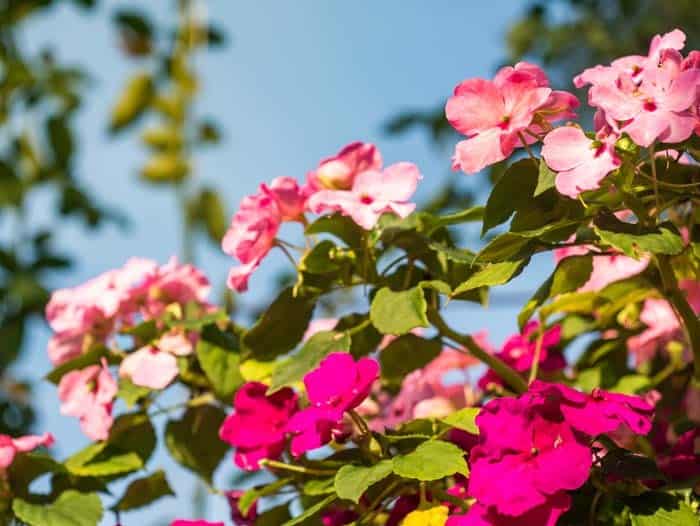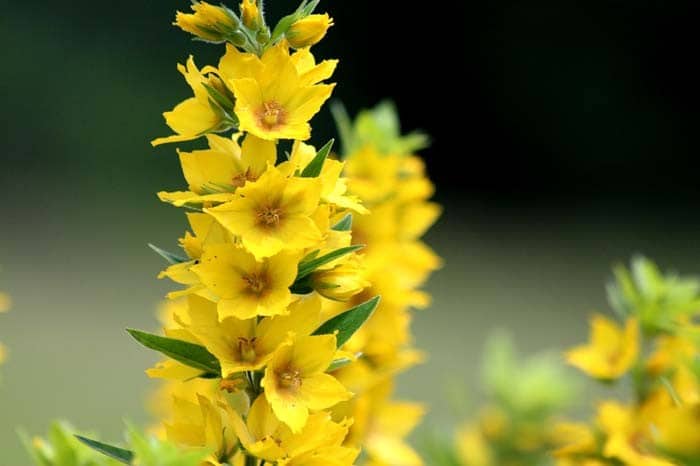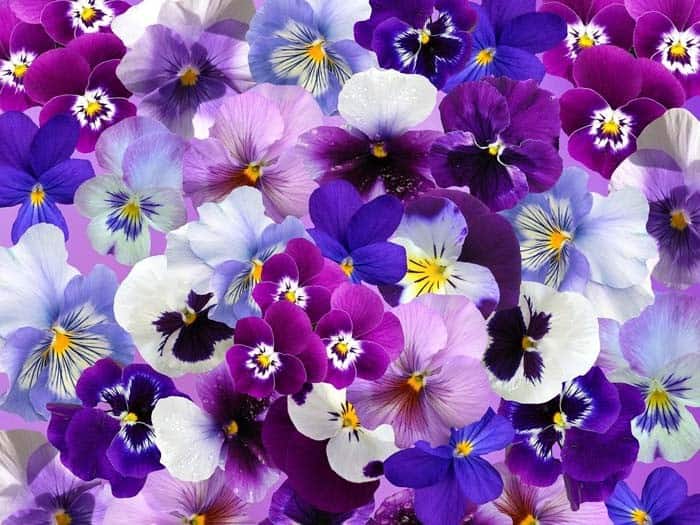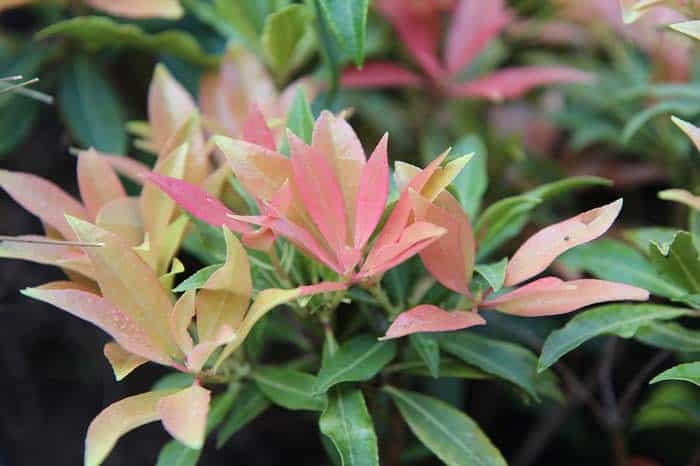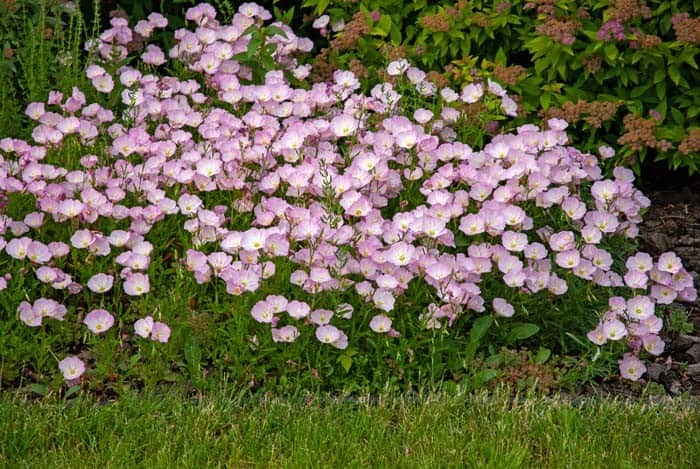When designing a garden, incorporating trees as a central element can be a wise decision. Not only do they provide a natural focal point for surrounding flowers, but they also create a sense of structure and definition to the space. As you plan your garden layout, consider selecting flowers that are well-suited to growing in the shade provided by the trees.
By making informed choices about the types of plants and trees to include, you can create a harmonious and thriving ecosystem where both the plants and trees can flourish.
Basics of Growing Flowers Under Trees
When designing an under-tree garden, consider these essential tips: Trim away lower branches to create more space for sunlight to reach the area. Avoid building raised beds near trees, as this can harm the tree and its root system. Instead, carefully dig holes for individual plants to avoid damaging the tree’s shallow roots. Be mindful of plant size, choosing smaller or non-spreading varieties that won’t overwhelm the garden.
Finally, ensure you’re planting flowers and plants suitable for your zone and the specific conditions under the tree.
Alpine Currant
If you reside in a region with a chilly climate, consider the alpine currant as an excellent option – it thrives in USDA Zone 3 or colder. To ensure optimal growth, position the plants in areas receiving full shade or near the periphery of your under-tree garden. While they don’t require much, they do benefit from moist soil and occasional pruning to maintain their health. As one of the most low-maintenance flowers I’ve encountered, the alpine currant is an excellent choice for any environment.
Anemone
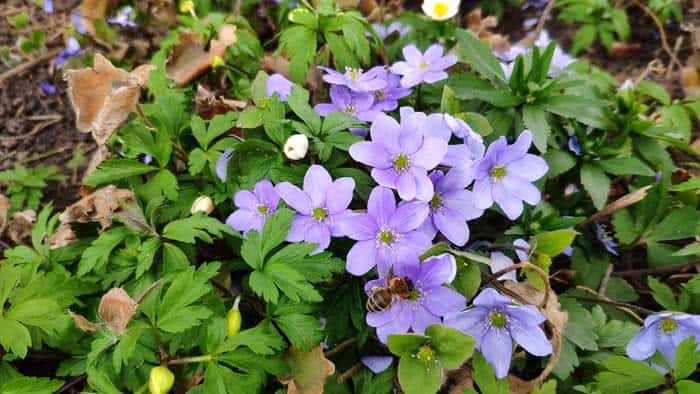
The anemone’s vibrant flowers bring a touch of vibrancy to any garden. While most varieties thrive in zones 4 to 8, success is largely dependent on proper spacing, with around 3-4 inches between plants being ideal. Furthermore, anemones require soil with adequate drainage to flourish. The Snowdrop Anemone showcases the beauty of this flower type, but you can also discover other stunning varieties like the Pink Anemone, Clematis and Japanese Anemone, all of which produce breathtaking blooms.
Azalea Flower
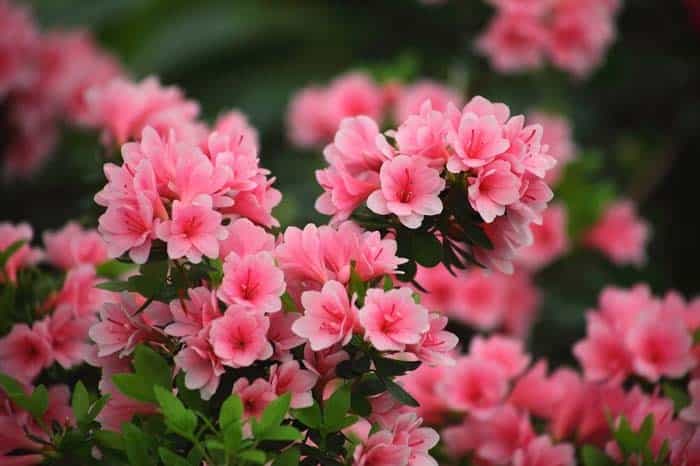
Azaleas, with their vibrant blooms, tend to flourish in zones 6-9 where the climate is warmer. To create an ideal environment for these plants, provide them with consistent moisture and acidic soil conditions. For optimal growth, consider situating your azaleas near a tree that can shield them from harsh winds while allowing dappled sunlight to filter through. Morning sunlight followed by evening shade also contribute to their overall health.
If you’re looking to add some stunning varieties to your landscape, consider the following: Fireball Azalea for its striking blooms, Honey Butter Rhododendron for its unique flavor and color combination, Lee’ Dark Purple Rhododendron for a dramatic pop of color, Black Hat Rhododendron for an air of mystery, Hot Pink Reblooming Azalea for a vibrant display that persists throughout the year, and White Reblooming Azalea for a classic and elegant appearance.
Begonias Flowers
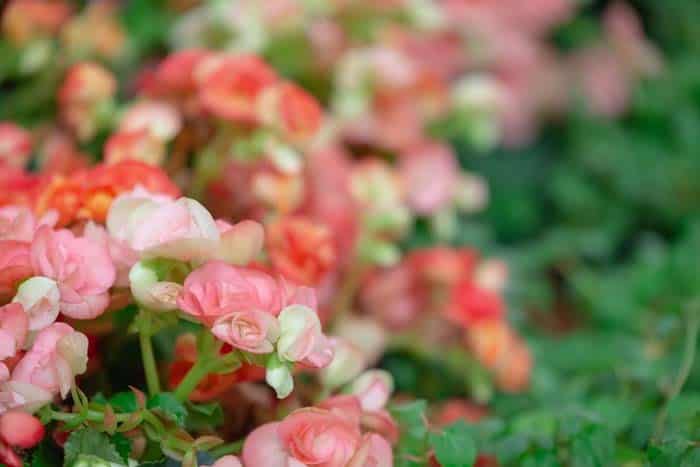
For gardeners in USDA zones 7-11, begonias are an excellent choice for planting under trees. These flowering beauties thrive in shade, responding enthusiastically to careful tending with a kaleidoscope of vibrant petals. To keep them happy, be sure to water regularly between rainstorms, maintaining soil moisture levels. Among my top picks are the stunning Maxima Switzerland Begonia, the Golden Balcony Begonia, and the Odorata Red and White Begonia, each offering its own unique charm.
Bergenia
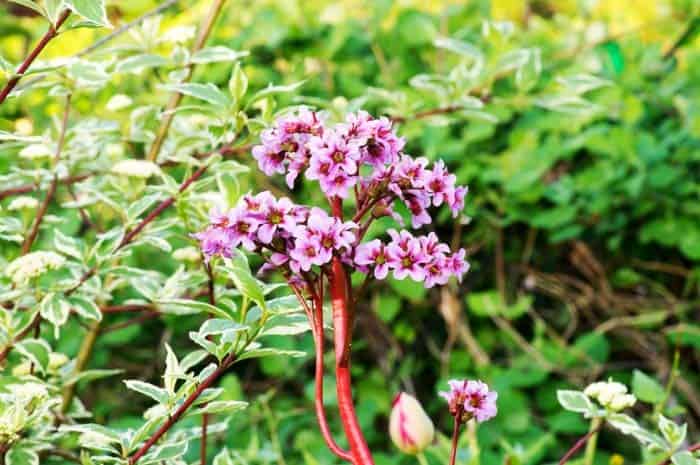
Bergenias bring a touch of elegance to any garden with their dainty flowers and compact, cluster-style growth habit. While they typically thrive in USDA zones 5-8, some hardier varieties can tolerate temperatures as low as zone 4. As the plants grow, their leaves provide a lush ground cover, making it essential to leave sufficient space beneath the foliage. In particular, I’m smitten with the Pink Dragonfly Bergenia, which remains my go-to choice.
Camellia Flower
Camellia, with its large, intricately layered blooms, is undoubtedly one of the most breathtaking flowering plants that thrive under trees. To coax out their full beauty, it’s essential to provide them with a sunny disposition – ideally, morning sunlight and dappled afternoon sun. If necessary, strategically position them about 3-4 feet away from the tree trunk to achieve this optimal lighting.
Furthermore, for these stunning blooms to flourish, camellias tend to thrive in zones 6 through 9, making them an excellent choice for gardeners within these regions.
Coleus Flower Plant
The coleus plant is a visual treat, boasting an array of vibrant colors that remain striking throughout the year. While its beauty is undeniable, it’s crucial to note that these stunning plants are quite particular about their environment and thrive only in zone 11. As such, they’re perfect for a select few locations. To encourage healthy growth and maximize leaf development, be sure to remove flower heads as soon as they begin to emerge.
Columbine
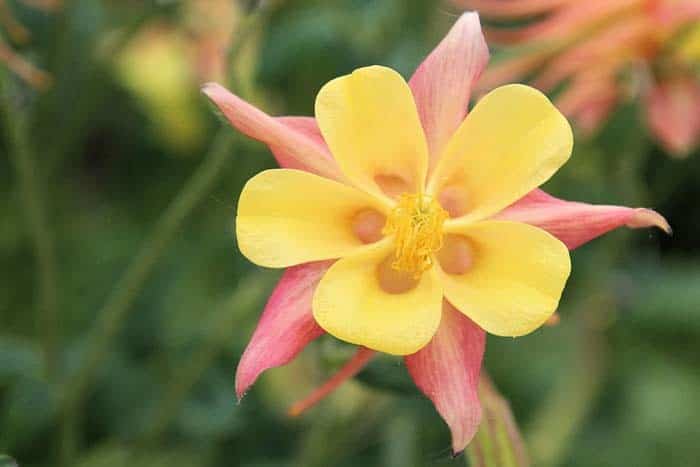
While its dainty appearance may suggest fragility, the columbine is surprisingly resilient and easy to care for. Its diminutive stature and vibrant blooms make it an attractive addition to any garden. What’s more, this hardy perennial requires minimal upkeep, allowing you to simply let the flowers drop naturally for effortless propagation under a tree or shrub.
With its tolerance for zones 3-8, the Little Lanterns Columbine is an ideal choice for gardeners of all skill levels seeking to add a pop of color and whimsy to their outdoor spaces.
Foamflower
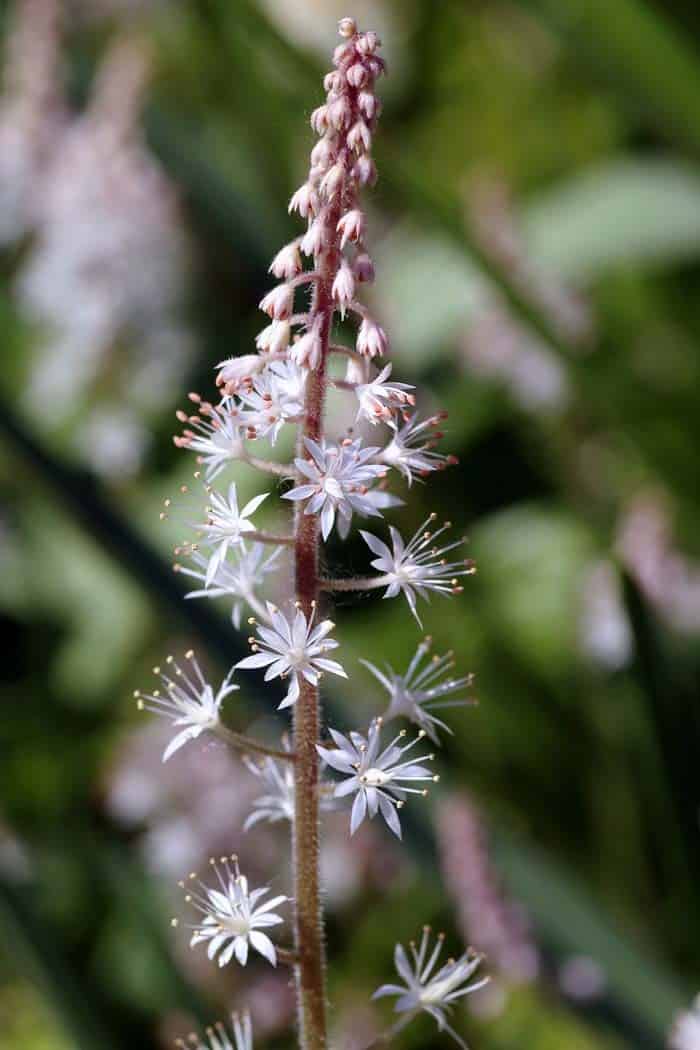
The foamflower boasts a striking appearance, characterized by its tall stem and cone-shaped clusters of dainty flowers that thrive in zones 4-9. A low-maintenance option, these plants typically don’t require pruning, except in cases where they start to appear wilted or faded – simply trimming them back can revitalize their appearance. Under the right conditions, with ample shade and time, the plants will naturally refresh themselves.
This variety, known as Cutting Edge Foamflower, excels at growing alongside trees, its slightly taller stature and vibrant blooms making it a standout addition to any garden.
Hens and Chicks Succulent
Succulents prove to be ideal flowers for planting under trees, particularly excelling in partially shaded environments. With a hardiness range spanning from zone 3 in the north to zone 8 in the south, these plants offer versatility in terms of location. Moreover, their low water requirements and remarkable ability to withstand winter conditions make them a resilient addition to any garden.
Hostas In Garden
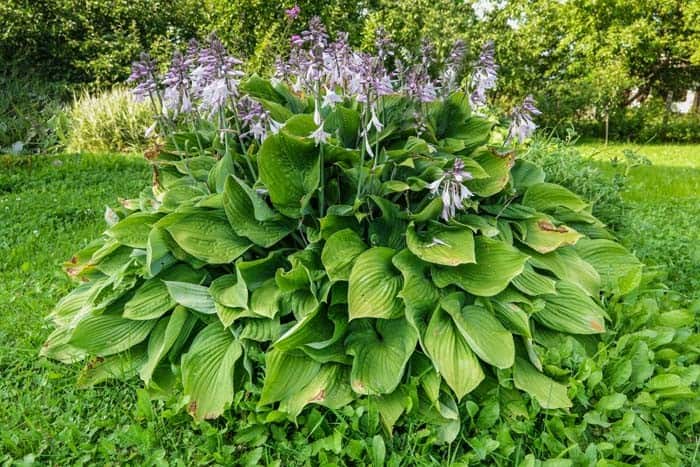
For gardeners with large gardens under the shade of a tree, hostas are an ideal choice. These versatile plants boast vibrant green leaves that thrive in zones 3-9. To maximize their beauty, select a partially shaded spot with slightly acidic soil and consider applying fertilizer annually. If you’re looking to add some variety to your garden or around your trees, consider the following hosta types: Patriot Hosta, Minuteman Hosta, Guacamole Hosta, Medio Veriegata Hosta, and Wide Brim Hosta.
Hydrangeas Plant Under Tree
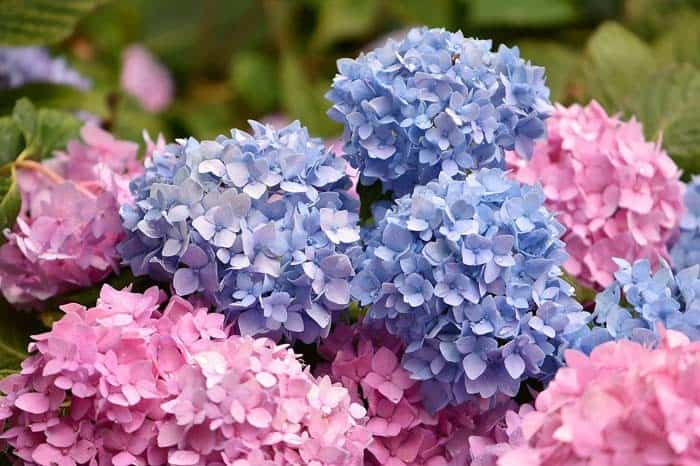
Transform your garden under a tree into a vibrant oasis by incorporating hydrangeas, which thrive in slightly acidic soil and a balance of sun and shade. These show-stopping blooms are as resilient as they are beautiful, capable of flourishing in zones 3-9. While personal favorites may vary, the ‘Penny Mac’ Hydrangea stands out to me for its stunning displays.
Impatiens Flowers
When it comes to planting flowers under a tree, impatiens are often the top choice. Their compact size and vibrant colors make them an ideal option for shaded areas in zones 10 and 11. As long as you provide consistent moisture, these flowers thrive in environments with full shade. However, it’s crucial to ensure the soil drains well to prevent mildew from developing.
With proper care, impatiens can add a pop of color to your garden and are particularly stunning when used in creative arrangements like spilled pot flower beds.
Lamium
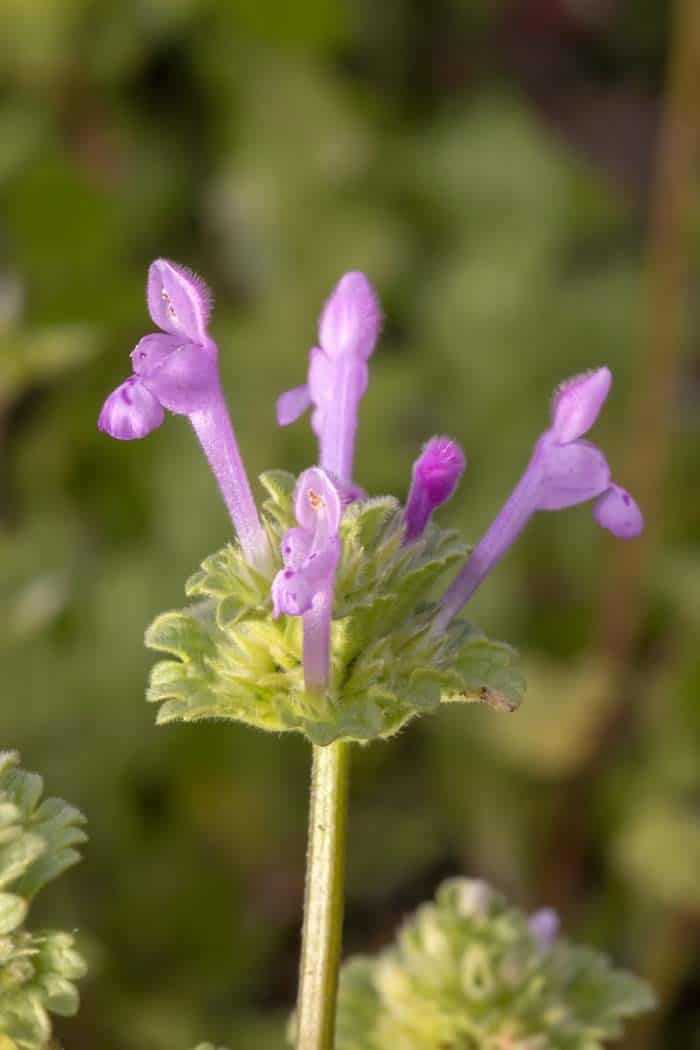
Discover the beauty of lamium plants in your garden! With their lush ground cover and vibrant blooms, they’re a must-have for zones 4-8. However, to truly bring out their best features, plant them in areas with partial or full shade, leaving at least 12 inches of space between each one. To give your lamiums an extra boost, consider applying monthly fertilizers to promote healthy growth.
If you’re looking for inspiration, the Lamium White Nancy variety is a personal favorite, but you can also opt for the stunning purple blooms of Ghost Lamium or the majestic hues of Lamium Purple Dragon – each one a unique addition to your blooming garden or backyard landscape.
Lysimachia Flower Plant
When selecting plants for partial shade, consider lysimachia as a reliable option. Its adaptability to different climates is impressive, thriving in zones 3 to 10. For added support, stake the plants if they start to grow taller than expected. Apart from occasional watering and trimming, these charming flowers are low-maintenance and require minimal upkeep.
Milkweed Flower Plant
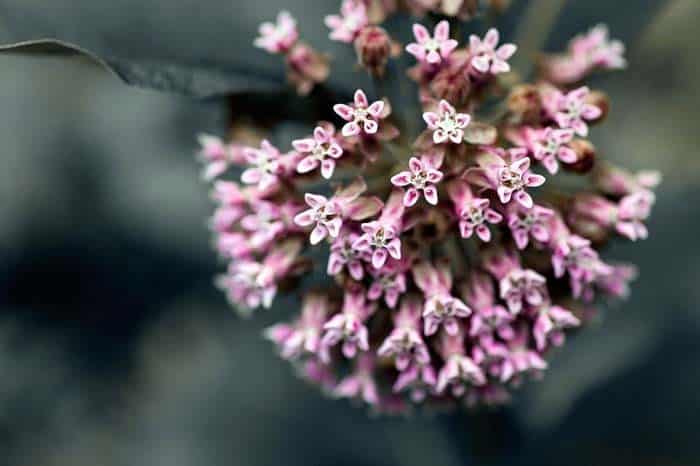
Milkweed plants are a delightful addition to any garden, boasting tiny flowers that grow in clusters on top of their foliage. This unique texture and color combination adds a playful touch to your outdoor space. For optimal growth, plant milkweed in zones 4-9, where it will thrive year-round. Since this plant demands ample sunlight, it’s particularly well-suited for gardens situated under small or narrow trees that provide shade.
Among the many species of milkweed, Common Milkweed stands out as the most popular and sought-after variety.
Mountain Laurel
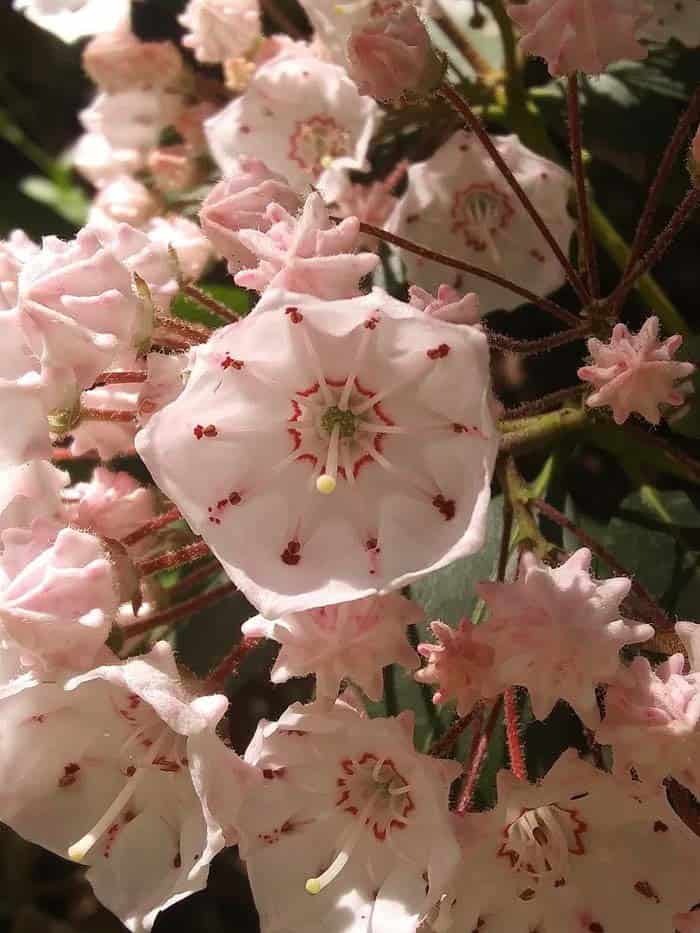
The mountain laurel’s claim to fame lies in its showy, one-of-a-kind flowers that bring vibrancy and life to your garden during the late spring and summer months. Additionally, its thick, emerald-green foliage provides a lush backdrop throughout the rest of the year. This stunning plant thrives in shady or partially-shaded spots with moist, acidic soil conditions. As a bonus, it’s relatively low-maintenance and can be planted in zones 5-9, making it an ideal choice for many gardeners.
In full bloom, Olympic Fire Mountain Laurel is truly breathtaking – its beauty knows no bounds.
Ninebark
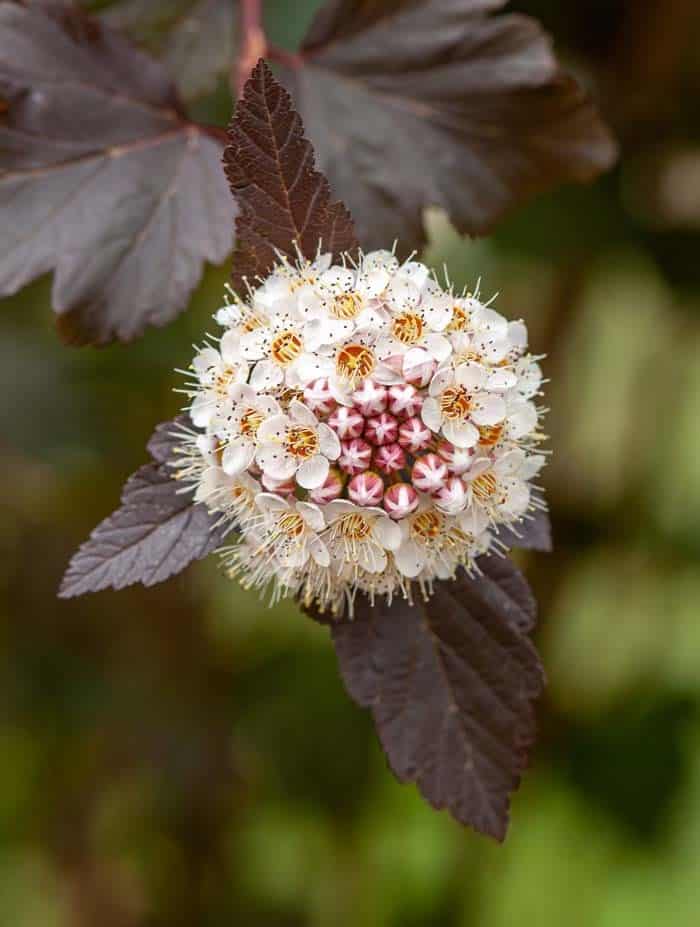
Ninebark stands out as one of the most resilient flowers when planted beneath a tree. Its exceptional hardiness makes it an excellent choice for cold climates, specifically thriving in zones 2-7. One of its greatest benefits is its low-maintenance nature – the small flowers and vibrant leaves require little attention, allowing you to simply plant them and apply fertilizer annually.
While full sun promotes rapid growth, Ninebark also flourishes in partial shade, offering versatility for gardeners. A stunning variety like Amber Jubilee Ninebark adds a pop of color to any landscape, making it a popular choice among homeowners seeking to enhance their property’s aesthetic.
Oregon Grape Holly
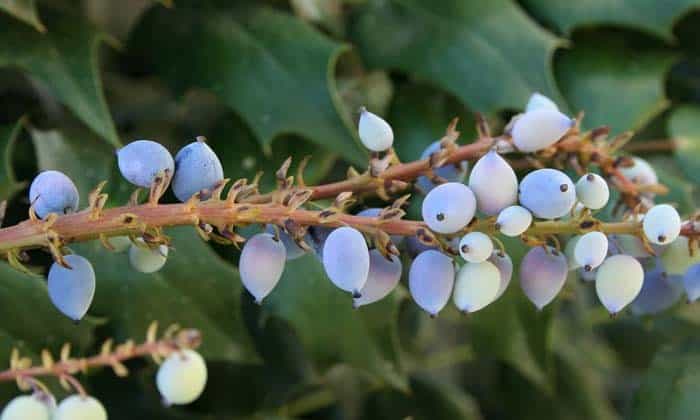
Oregon grape holly stands out for its striking yellow blooms and vibrant blue fruit. While it’s a relatively low-maintenance plant, it does require regular watering – ideally once a week – in zones 5-9. In addition to proper hydration, Oregon grape holly thrives in sunny environments. Interestingly, the berries will reach their full potential if you have at least two plants nearby.
Pansies and Violets
The sight of a carpet of purple pansies and violets blanketing the base of your tree is sure to put a smile on your face. These vibrant flowers are surprisingly adaptable, thriving in partial shade but truly coming alive when basking in the warm sunlight. For a treat that’s out of this world, consider planting them beneath a deciduous tree to enjoy a spectacular display of early spring and late-fall blooms.
What’s more, pansies and violets are remarkably resilient, capable of withstanding the temperatures found in USDA zones 4-8.
Pieris Japonica
Elevate your outdoor space with the vibrant Pieris Japonica, boasting stunning color that thrives in full sun or partial shade within zones 5-9. Its statuesque presence makes it an ideal choice for adding a pop of color to your garden. For optimal blooming, position this plant under the shade of a tree, but be aware that reduced sunlight may slightly diminish its vibrant hues. To ensure healthy growth, select soil with good drainage properties.
Pink Evening Primrose Flowers Garden
If you’re fortunate enough to have deer frequenting your yard, you might be wondering how to keep them from munching on your flowers. One solution is to plant pink evening primrose (Oenothera speciosa) – deer tend to leave these lovely blooms untouched. To encourage healthy growth and maximize the chances of keeping the deer at bay, select a spot in your garden that receives ample sunlight and provide occasional watering.
As an added bonus, pink evening primrose is hardy in zones 5-9, making it a great choice for many gardeners.
Sedum Plant
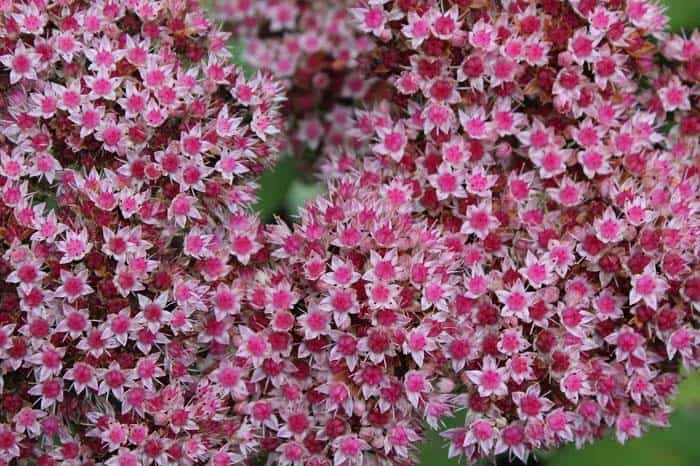
Sedum, often mistaken as a conventional flowering plant, is in fact a succulent. Its robust stems and roots thrive in zones 3-10, where they can soak up ample sunlight to showcase their vibrant flowers. When it comes to soil, look for areas with well-drained conditions that will support the plant’s growth. Some of my top picks include Red Carpet Sedum, Lime Zinger Sedum, Flaming Carpet Sedum, SunSparkler Firecracker Sedum, and Double Martini Sedum.
Snowberry
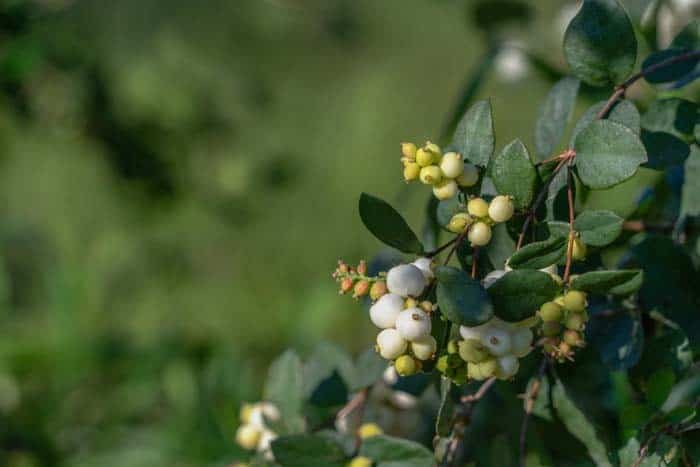
For homeowners in USDA Hardiness Zones 3-7, the sweet snowberry plant (Symphoricarpos albus) offers a unique combination of beauty and functionality. Its delicate white and light-yellow berries complement vibrant flowers perfectly, making it an excellent choice for adding visual interest to your garden. To keep your snowberry plants thriving, be sure to prune them regularly to maintain shape and promote healthy growth. Additionally, fertilize every other year to provide essential nutrients.
If you’re looking for alternative options, the Magic Berry Snowberry (Symphoricarpos albus ‘Magic Berry’) is another popular variety that offers similar characteristics and benefits.
Tree Peony
Tree peonies add a pop of color and vibrancy to any yard with their stunning blooms and dainty petals. Their adaptability is just one of their many charms – they thrive in a range of shade and sunlight conditions, making them a great choice for gardens across zones 3-9. For optimal growth, plant tree peonies during the milder spring or fall seasons and give them a little TLC by trimming them once a year, typically in the spring.
